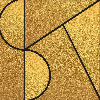
How the Two-Armed Goddess of Durgabari Temple Symbolizes Sacrifice and Strength
Share
Have you ever wondered why the idol of Goddess Durga in Durgabari Agartala only has two arms, unlike the traditional depiction of the goddess with ten arms? Let's delve into the intriguing story behind this unique representation.
The Legend of Durga
In Hindu mythology, Goddess Durga is known for her ten arms, each carrying a weapon symbolizing her various powers to combat evil forces. However, the idol in Durgabari Agartala deviates from this norm, portraying the goddess with only two arms holding a trident and a lotus.
The Story Unfolds
Legend has it that the idol of Durga in Durgabari Agartala was sculpted by a renowned artisan who was deeply inspired by a divine vision. In this vision, Goddess Durga appeared before the artisan and requested him to create an idol with only two arms, emphasizing the importance of inner strength and purity over external manifestations of power.
The artisan, moved by the goddess's message, crafted the idol with meticulous detail, capturing the essence of Durga's divine grace and wisdom in her serene expression and posture. The two arms of the goddess symbolize her unwavering focus and unwavering devotion to righteousness.

The Symbolism Behind Two Arms
While the traditional depiction of Goddess Durga with ten arms represents her formidable prowess in battle, the idol in Durgabari Agartala conveys a deeper spiritual message. The two arms of the goddess remind devotees to look beyond external appearances and connect with the inner strength and purity that reside within each individual.
Visitors to Durgabari Agartala are often captivated by the unique representation of Goddess Durga, which serves as a powerful reminder of the goddess's timeless message of inner strength, devotion, and righteousness.
Next time you visit Durgabari Agartala, take a moment to admire the idol of Goddess Durga with two arms and reflect on the profound symbolism behind this unconventional representation.
